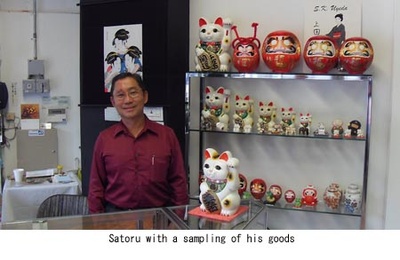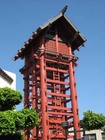The connection between Japanese Americans and World War II is an important one to understand for all Americans. With one piece of legislation—Executive Order 9066—thousands of Japanese immigrants and Japanese Americans were sent to several internment camps dotting the country. One of these was the Manzanar internment camp located in California’s Owens Valley. It was here that the Uyeda family was forced to relocate to and it was here that Satoru was born.
Following the end of World War II and the end of the internment, Japanese Americans were able to return to Little Tokyo. However, they returned to a vastly different neighborhood. Landlords in the area replaced the Japanese community with another. Because of the large number of wartime jobs, African Americans migrated from all over the United States to Los Angeles. However, they would find a city unwilling to accept them. As a result, they were forced to accept living in selected areas of the city. Little Tokyo was one of those places. It gained the name Bronzeville. It was this area that Japanese Americans returned to. They had to reclaim this area for their own and needed strong personalities in order to do so.
One of the stabilizing forces in the neighborhood was the Uyeda Department store. It allowed the community to buy uniquely Japanese goods that one could not find elsewhere. Satoru Uyeda has been working at his family’s store since the late 1970s and took over the business in 1992 following the passing of his father. As owner of Uyeda Department store, Satoru has been able to not only serve the business needs of the community, but also improve the overall safety of the community.
During the 1990s, Little Tokyo experienced a great influx of homeless people. This led to concerns that people would not come to visit the neighborhood because visitors would not stand for pan-handling or other forms of badgering. There was a feeling that people would be afraid to venture into the area because of the homeless problem. In fact, patrons were less likely to wait on long lines outside of restaurants and churches would not hold service at night—even funeral services.
In order to combat this problem, Satoru joined with two other business owners in Little Tokyo—Brian Kito of Fugetsu-do and Kenji Suzuki of Suehiro Restaurant—and they reorganized the Little Tokyo Public Safety Organization—formerly known as the Little Tokyo Anti-crime Organization. The plan was to have volunteers from the community actively participate and help alleviate the problems caused to patrons by the homeless. To that end, the Public Safety Organization would gather ten to fifteen volunteers and send them on patrol to ensure that the residents of and visitors to Little Tokyo could feel safe when they walked around the neighborhood. Cooperation with the Los Angeles Police Department was central to their efforts. For example, they were trained by the LAPD in order to go on bicycle patrol. To this day, there are bicycle patrols in Little Tokyo but those are maintained by the Business Improvement District (BID). At the peak of the Public Safety Organization, they had about 52 volunteers.
It took about ten years for the organization to bring the safety level in Little Tokyo to an acceptable level. One of the more important markers of that decade is the Koban located at 307 East 1st Street. This is a carryover from Japan where koban litter the streets and serve as a crime prevention measure. The Koban in Little Tokyo is, in fact, a Police substation, but it also serves as a general information center and a museum, of sorts, that houses pictures of the volunteer work that Satoru and others were involved in.
Today, the safety of the community is handled by the BID. Businesses in the neighborhood pay a fee in order to have the BID handle the safety of the community as a whole. When one walks around Little Tokyo, one needs only to look for the people dressed in green and purple on their bicycles to see whose hands Little Tokyo is in. That is not to say that LAPD is not involved, but these specially dressed patrolmen help the police focus their efforts on more serious problems afflicting downtown and the city at large. However, that is not the end of the volunteerism for Satoru and his partners. They still work closely with the LAPD upon request. For example, the police department needed volunteers in order to help catch car thieves and they helped provide valuable surveillance. In addition, there is a current investigation that Satoru and his volunteers are assisting that has to do with the homeless problem elsewhere in the city. For security reasons, I am unable to write of the specifics. For all his efforts, Satoru has recently been awarded the 2008 Volunteer of the Year award by the Los Angeles Police Department.
Discover Nikkei partnered with Professor Morgan Pitelka of Occidental College and his students taking the Spring 2009 seminar "Japanophilia: Orientalism, Nationalism, Transnationalism" on a meaningful community-based documentation project. The students interviewed owners of five long-time Little Tokyo businesses to create Nikkei Album collections and articles.
View the Nikkei Album collection: Uyeda Department Store
© 2009 Guilberto Moran





